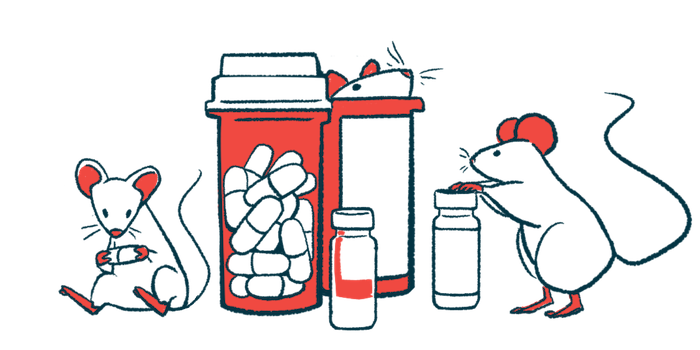Blocking Hyaluronic Acid Halts Progression of PH in Early Study

Hyaluronic acid, a major component of the extracellular matrix that supports cell function, directly contributes to the development of pulmonary hypertension (PH) via pulmonary vascular remodeling, a preclinical study has found.
By pharmacologically blocking the production of the substance in a PH mouse model, researchers were able to prevent vascular remodeling and lowered pulmonary blood pressure, supporting the strategy as a promising treatment for the disease.
The study, “3’UTR shortening of HAS2 promotes hyaluronan hyper-synthesis and bioenergetic dysfunction in pulmonary hypertension,” was published in the journal Matrix Biology.
PH is a group of disorders marked by high blood pressure in the pulmonary arteries, the blood vessels that pass through the lungs. The condition is characterized by increased vascular remodeling — which are alterations in the structure of pulmonary arteries that narrow the blood vessels and obstruct blood flow — leading to symptoms such as shortness of breath and muscle weakness.
Identifying treatments that prevent vascular remodeling is an emerging field in PH therapeutics. However, a greater understanding of the underlying processes is needed to support the development of new therapies.
Research suggests the extracellular matrix (ECM) — a three-dimensional network of molecules outside the cell that provides structural support to surrounding cells — contributes to pulmonary vascular remodeling.
One of the most abundant molecules in the ECM is hyaluronan (HA), also called hyaluronic acid. HA, produced by hyaluronan synthase (HAS) enzymes, is found at higher levels in the lungs of patients with PH.
This study addressed the role played by HA and HAS in the disease. First, the researchers confirmed that vascular HA and HAS2 protein — one of three HAS enzymes that contributes to the majority of HA content — were both elevated in the lungs of people with pulmonary arterial hypertension (PAH). Human pulmonary artery smooth muscle cells (PASMCs) isolated from PAH patients retained higher levels of HA.
In a mouse model of PH induced by low oxygen, there was an increase in the activity of the gene that encodes for HAS2. PASMCs were then identified as a major source of HAS2 imbalance and HA overproduction.
Experiments to understand the underlying cause of elevated HAS2 and HA found reduced production of NUDT21 protein in the pulmonary arteries of PAH patients compared to healthy individuals. NUDT21 is known to participate in processing messenger RNA (mRNA), the molecule that carries the genetic instructions to make proteins. In the mouse model, NUDT21 was reduced by about half.
The loss of NUDT21 led to the shortening of the three prime untranslated regions (3’UTR) of HAS2 mRNA, which is part of the mRNA molecule that does not contain protein information but helps control protein production. Silencing NUDT21 in PASMCs led to 3’UTR shortening and increased HAS production.
Next, PASMCs exposed to excess HA induced the malfunction of energy-producing mitochondria and altered cell metabolism. Inducing higher production of HAS2 in PASMCs, which led to increased HA secretion to similar levels found in PAH cells, promoted pro-remodeling characteristics in these cells.
Compared to controls, mice bred to overproduce HAS2 showed elevated blood pressure in the right ventricle of the heart, a sign of PH, which was exacerbated following exposure to low oxygen to induce PH. In addition, under normal oxygen conditions, these mice had enlarged right heart muscles and developed spontaneous pulmonary muscular remodeling.
Conversely, mice bred to lack HAS2, then exposed to low oxygen, showed eliminated pulmonary vascular HA and were protected against an induced increase in blood pressure in the right ventricle.
Overall, “mice, mimicking HAS2 hyper-synthesis in smooth muscle cells, developed spontaneous PH, whereas targeted deletion of HAS2 prevented experimental PH,” the researchers wrote.
Last, a compound with a well-established clinical safety profile called 4MU, designed to block the activity of HAS, spontaneously restored mitochondria function and cell metabolism in HPASMCs.
Treating PH-induced mice with 4MU once vascular remodeling was present prevented further deposition of HA, decreased pulmonary vascular muscularization (an early step in remodeling), and eased high blood pressure and enlargement of the right heart ventricle.
“This study provides new evidence that hyaluronan (HA) directly contributes to the pathogenesis [development] of PH,” the researchers wrote. In addition, the “genetic deletion or pharmacologic inhibition of HA can protect against experimental PH and support anti-HA therapy as a viable therapeutic strategy.”









